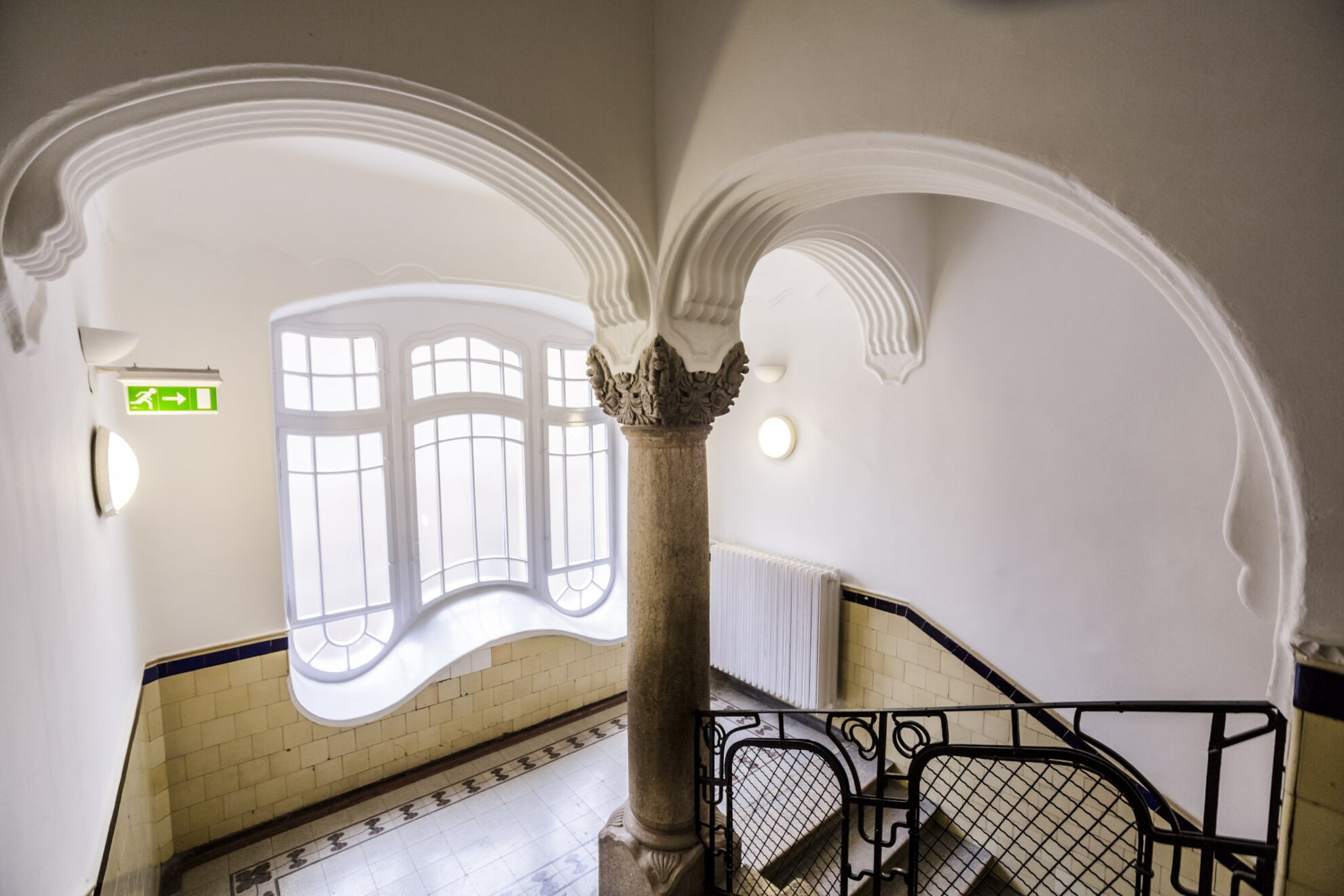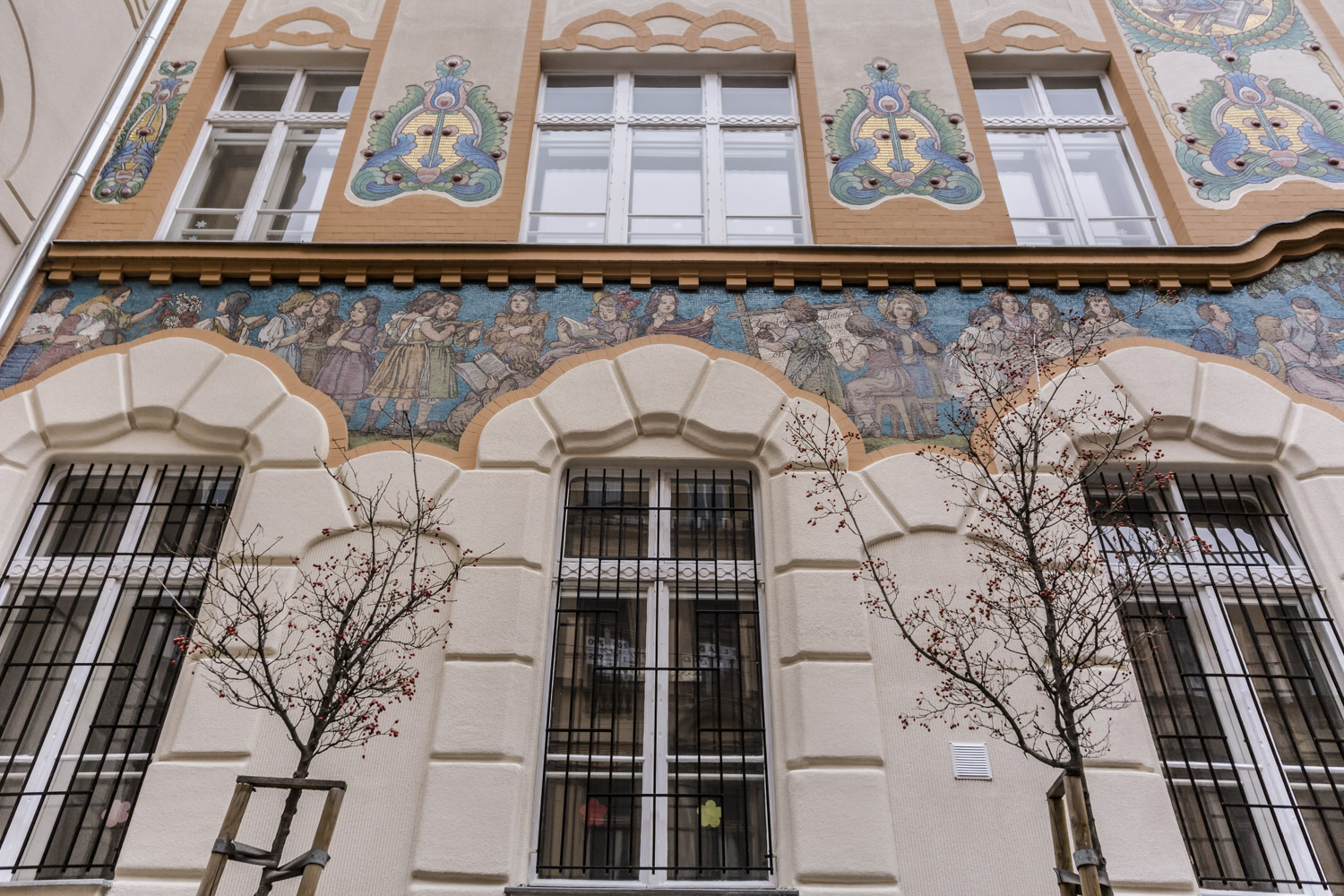The building was erected as a school between 1905 and 1906 according to the plans of Hungarian architect Ármin Hegedűs. Besides this incredibly stunning educational institution in Dob Street, he also contributed to the building of the Török Bank House on Szervita Square, and the famous
Gellért Hotel and Bath.

During his lifetime, Ármin Hegedűs designed several school buildings, hence, his experiences enabled him to create
a contemporary building that also adapts to pedagogical principles.

The edifice was inaugurated by Budapest’s major of the time, István Bárczy, who might have also been inspired by this building to initiate his grand school-construction
program. On the front façade, eagle-eyed viewers can also spot Budapest’s coat of arms made of mosaic tiles.

The architect also managed to cleverly adapt to the narrowness of the street: he positioned the avant-corps with the gates on the front, while the rest of the façade remained in the background. This way, he left enough space in front of the building, and could also get
more sunshine
into the rooms.

The façade is also enhanced with mosaics designed by Hungarian painter Zsigmond Vajda and implemented by
Magyar stained-glass master Miksa Róth. These colorful mosaics depict motifs that are appropriately childish, such as a globe, a ruler, toy soldiers, floral design, embroidery, and singing. Some of these motifs also appear in the design of the gates.

Within the framework of this recent renovation, not only the
façade was
renewed, but also the roof, some of the rooms, and the gymnasium.

It is truly fortunate that the building’s beauty was not only preserved outside, but inside as well: the terrazzo floors of the corridors, the pigeons and squirrels adorning the columns, the Secessionist doors, the wall decorations, the Zsolnay tiles of the staircase, the stuccos in the ceremonial hall, and the wooden railings on the steps that lead up to the gallery still ornament the interior. With the restoration of some of these interior elements and the building, Budapest’s schoolkids can once again study amid the walls of a truly wonderful and inspiring building.




